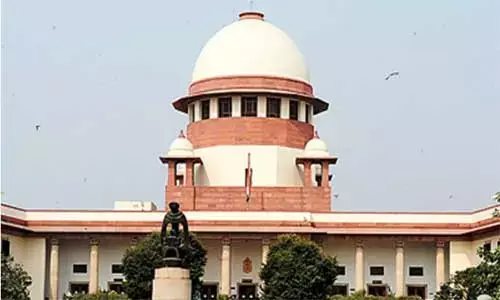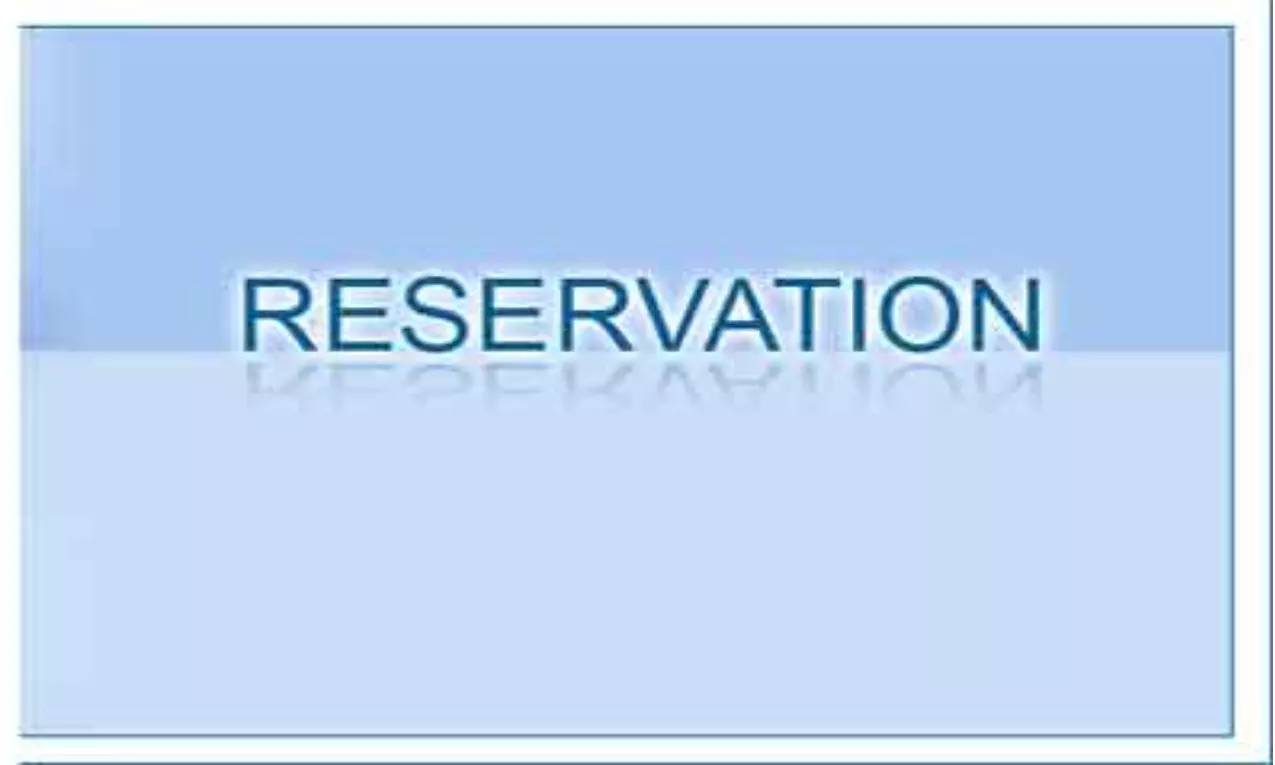- Home
- Medical news & Guidelines
- Anesthesiology
- Cardiology and CTVS
- Critical Care
- Dentistry
- Dermatology
- Diabetes and Endocrinology
- ENT
- Gastroenterology
- Medicine
- Nephrology
- Neurology
- Obstretics-Gynaecology
- Oncology
- Ophthalmology
- Orthopaedics
- Pediatrics-Neonatology
- Psychiatry
- Pulmonology
- Radiology
- Surgery
- Urology
- Laboratory Medicine
- Diet
- Nursing
- Paramedical
- Physiotherapy
- Health news
- Fact Check
- Bone Health Fact Check
- Brain Health Fact Check
- Cancer Related Fact Check
- Child Care Fact Check
- Dental and oral health fact check
- Diabetes and metabolic health fact check
- Diet and Nutrition Fact Check
- Eye and ENT Care Fact Check
- Fitness fact check
- Gut health fact check
- Heart health fact check
- Kidney health fact check
- Medical education fact check
- Men's health fact check
- Respiratory fact check
- Skin and hair care fact check
- Vaccine and Immunization fact check
- Women's health fact check
- AYUSH
- State News
- Andaman and Nicobar Islands
- Andhra Pradesh
- Arunachal Pradesh
- Assam
- Bihar
- Chandigarh
- Chattisgarh
- Dadra and Nagar Haveli
- Daman and Diu
- Delhi
- Goa
- Gujarat
- Haryana
- Himachal Pradesh
- Jammu & Kashmir
- Jharkhand
- Karnataka
- Kerala
- Ladakh
- Lakshadweep
- Madhya Pradesh
- Maharashtra
- Manipur
- Meghalaya
- Mizoram
- Nagaland
- Odisha
- Puducherry
- Punjab
- Rajasthan
- Sikkim
- Tamil Nadu
- Telangana
- Tripura
- Uttar Pradesh
- Uttrakhand
- West Bengal
- Medical Education
- Industry
Cannot Pull out Rs 8 lakh from thin air: SC to Centre on NEET AIQ EWS quota Reservation

New Delhi: Asking if the Central Government would like to revisit its decision regarding the limit of annual income bar of Rs 8 lakhs fixed to determine the Economically Weaker Sections (EWS) category for reservation in the National Eligibility-cum-Entrance Test, the Supreme Court on Thursday noted that the limit was same for determining the creamy layer in the OBC category as well.
Clarifying that there should be a basis for determining the limit, the top Court was quoted observing by PTI, "You cannot just pick Rs 8 lakh out of the thin air and fix it as a criteria. There has to be some basis, some study. Tell us whether any demographic study or data was taken into account in fixing the limit. How do you arrive at this exact figure? Can the Supreme Court strike down the criteria, if no study was undertaken?"
"You are making unequals equals by applying the Rs 8 lakh limit," Justice Chandrachud was quoted adding by Live Law.
"Tell us if you want to revisit the criteria or not. If you want us to discharge our duties, then we are ready to do so. We are formulating questions which you need to answer them," further noted the bench.
However, the top court also clarified that it is not embarking into the policy domain but is only trying to ascertain whether constitutional principles have adhered or not.
Further the bench of Justices DY Chandrachud, Vikram Nath, and BV Nagarathna was annoyed as no affidavits were filed by the Ministry of Social Justice and Empowerment and the Department of Personnel and Training (DOPT) and formulated questions to be answered by the Centre in a week.
"Please show us something. You had 2 weeks to file an affidavit. We can stay the notification & in the meanwhile you do something", Justice Chandrachud was quoted saying by Live Law.
"We may stay the government notification fixing rupees eight lakh criteria for determining the EWS and you can keep filing the affidavits," observed the bench at this outset.
However, the ASG pleaded the court to not stay the notification and undertook to file the affidavit at the earliest. He further assured the court that the draft affidavit was ready and the reply would be filed within 2-3 days.
The top court was hearing a batch of pleas challenging the Centre and Medical Counselling Committee (MCC) July 29 notice providing 27 per cent reservation for Other Backward Class (OBC) and 10 per cent for EWS category in the National Eligibility cum Entrance Test (NEET) admissions for medical courses.
On September 17, the top court agreed to hear a batch of pleas of students against the July 29 notice providing 27 per cent reservation for OBC and 10 per cent for EWS category in 15 per cent UG and 50 per cent PG All India Quota seats (MBBS/BDS and MD/MS/MDS) with effect from the current academic session 2021-22.
On October 7, the top court had posed searching questions to the Centre on its decision to fix a limit of rupees eight lakh annual income for determining the EWS category for reservation in NEET admissions.
The Centre had then said fixing a limit of Rs eight lakh annual income for the EWS category is a matter of policy based on the National Cost of Living Index.
During the hearing on Thursday, the top court once again asked searching questions from Additional Solicitor General KM Nataraj, appearing for Centre, and asked whether any exercise was undertaken before fixing a limit of Rs 8 lakh annual income for determining the EWS category.
"Whether Major Gen (retd) SR Sinho commission report of 2010 was considered before ascertaining the criteria? The report of the commission has to be placed on record before the court," the bench said.
Major Gen (retd) SR Sinho commission was constituted by the UPA government in 2010 and has recommended welfare measures for the EWS category.
ASG Natarajan said that the commission's report was one of the basis for determining the criteria but after that several deliberations were held and other factors were also taken into account.
"Fixing of criteria of Rs 8 lakh is a pure policy matter and the court should not interfere with it. It was decided after proper application of mind," he said.
Natarajan submitted that the draft of the affidavit by concerned departments is ready and they will be filing it in a day or two.
The bench said that it is not going to tell the government as to what should be the limit whether it should be rupees four lakh or rupees six lakh because it is for the executive to decide but all it wants to know is what was the basis for fixing Rs 8 lakh as the limit.
"For determining creamy layer in Other Backward Classes (OBC) category the limit was fixed as Rs 8 lakh annual income and they were considered progressed class among OBCs and they were excluded from reservation benefits. Here, for the EWS category, the limit is the same Rs 8 lakh annual income but it was for inclusion in the reservation benefits," the bench said.
"You cannot just pick Rs 8 lakh out of the thin air and fix it as a criteria. There has to be some basis, some study. Tell us whether any demographic study or data was taken into account in fixing the limit. How do you arrive at this exact figure? Can the Supreme Court strike down the criteria, if no study was undertaken?" added the bench at this outset.
It asked the Centre to respond to a question that since the income limit of determining the creamy layer in OBC category and EWS is the same that is Rs 8 lakh, whether it would be arbitrary to provide a similar income limit for EWS and OBC.
The top court also asked whether rural and urban purchasing power was accounted for and on what basis the asset exception was arrived at and why the residential flat criteria do not differentiate between metropolitan and non-metropolitan areas.
The bench said that as per the explanation in the 103rd constitution amendment says that criteria for EWS will be notified by the state governments, then how can the Centre notify a uniform EWS criterion for the whole of the country.
The top court then formulated the question and asked the Union Ministry of Social Justice and Empowerment and DOPT to file their replies by October 28.
Also Read: Supreme Court Sets Aside Madras HC Observations on EWS Quota in AIQ Medical Admissions
As per the latest media report by Live Law, the bench passed an order formulating questions on certain issues and sought specific responses from the Union Government regarding the same.
1. If the Centre undertook any exercise before fixing the determining criteria for EWS.
2. If yes, is the criteria based on Sinho commission report. If so, place the report on record.
3. Rs 8 lakh is the income limit for determining both the creamy layer in OBC and also the EWS. In the OBC category, the economically advanced category is excluded as social backwardness diminishes. Considering the situation, if it would be arbitrary providing similar income limit for EWS and OBC, as EWS has no concept of social and economic backwardness.
4. If the Centre had taken into account regarding the difference in rural and urban purchasing power.
5. What was the basis for arriving at the asset exception and if any exercise has been undertaken for the same.
6. What are the reasons why residential flat criteria doesn't differentiate b/w metropolitan and non-metropolitan area.
Besides the bench also referred to the fact that as per the explanations to Articles 15(6) and 16(6), the State Governments notify the criteria for EWS.
In fact, the explanation included in the 103rd Constitution amendment, under Articles 15 & 16 says that the economically weaker sections "shall be such as may be notified by the State from time to time on the basis of family income and other indicators of economic disadvantage," pointed out the bench and at this outset, the court asked about the basis for the Centre to notify the EWS criteria on a uniform basis across the country.
However, the bench clarified that it was not interfering in the policy decision and noted, "We make it clear that we are not entering area of policy but need the disclosure for adhering to constitutional principles."
M.A in English Barsha completed her Master's in English from the University of Burdwan, West Bengal in 2018. Having a knack for Journalism she joined Medical Dialogues back in 2020. She mainly covers news about medico legal cases, NMC/DCI updates, medical education issues including the latest updates about medical and dental colleges in India. She can be contacted at editorial@medicaldialogues.in.



